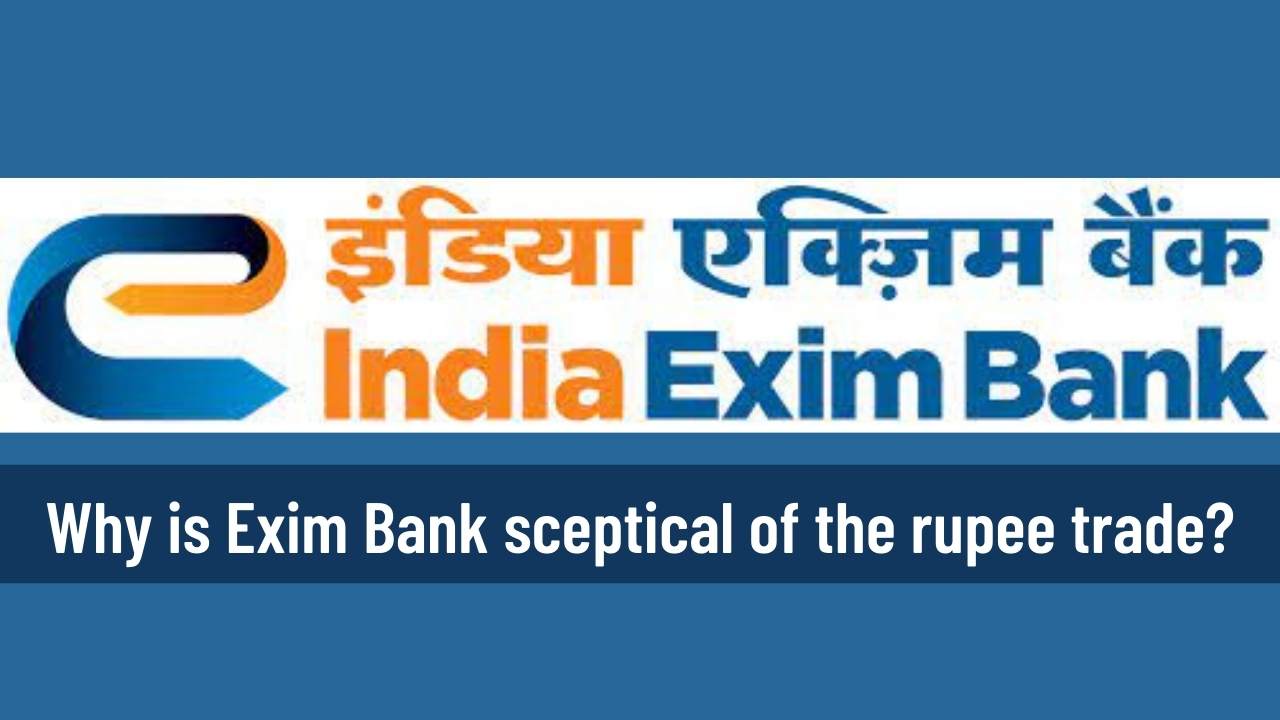Why EXIM Bank is not too gung-ho on rupee trade


In the last few days, there has been a lot of discussion about rupee settlements. More so after the RBI announced a scheme to empower Indian exporters to settle the trades in Indian rupees. To begin with, RBI wants to ensure that, at least, the flow of trade with BRICS nations like Brazil, Russia, China and South Africa should be rupee denominated. In addition, RBI also sees the possibility of Iran coming under the rupee trade since it is still under US sanctions. Even Sri Lanka may be willing for rupee trade to get out of the crisis.
However, not all are enthusiastic about this proposal. You obviously take the views seriously, when it comes from the head of EXIM Bank, India’s largest trade funding organization. According to Harsha Bangari, the entire concept of rupee denominated trade may look extremely enticing on paper, but in reality it may not be that simple. Bangari sees several practical challenges to a full-fledged rupee trade; both in terms of the domestic approvals accorded to the process and also in terms of global acceptance.
According to Bangari of EXIM Bank, the idea of invoicing in Indian rupees is a positive step, but we need to be more pragmatic about the likely outcomes. However, she feels that rupee trading may really take off only if dollar trading almost becomes impossible. There is the issue of which protocol we used. For instance, with Iran, India had adopted the US Office of Foreign Assets Control (OFAC) rules. Since India had reduced its import bills from Iran, India was not able to deposit sufficient rupees in the account, post which it became inactive.
The second part of the story is that the entire modus operandi of Rupee invoicing would be extremely process driven. Remember, even if you read the fine print of the RBI note on rupee settlement, it is not a blanket approval that has been given. RBI has approved the mechanism, but banks that will open the Vostro accounts still need to take the due approvals. Also, the approval has to be sought from the RBI on a case-by-case basis, which could actually make the entire process very cumbersome and convoluted for the customer.
The whole idea of Rupee Invoicing is to take out the third currency from the trade. For instance, why should a trade between India and China be denominated in US dollars. It just adds a level of currency risk and cross-currency risk for the trader, which can be avoided with Rupee invoicing. That is exactly what Harsha Bangari says. Conceptually, the idea is almost flawless; she is just sceptical about the practical applications. Even in the case of Sri Lanka and Iran, imports must continue at elevated levels in the future also.
According to Harsha Bangari, the real challenge for the rupee trading and invoicing is the exorbitant privilege that the US dollar enjoys in the current context. Even though the value of the dollar should be ideally falling due to too much of monetary looseness, the dollar commands a premium in the global market since there the exorbitant privilege of being the central trading currency.
Till that privilege exists, it would be tough to dislodge the US as the central trade currency and introduce an element of India invoicing in the entire story.
Notwithstanding all these discussions about the exorbitant privilege of the dollar and rupee invoicing, the real concern is about the likely slowdown in merchandise exports from India due to the impact of global recession. That would be clearer when the Fed decision is known on 27th of July. It is apprehended that if the Fed turns out to be ultra-hawkish, then it could result in a recession and a consequent impact on exports. Remember, the US has been showing negative growth for 2 quarters. That is the bigger challenge for Indian trade.
It’s not easy to export today. Only with the Russia-Ukraine situation you are not getting ships. The cost of exports is going up from the logistics point of view, and imports are also going up. It’s more of a supply disruption which has given way to inflation. Yes, there is a fear of recession in the West. We will have to see how the trade data is looking going forward
Share Market Today
| Indices Name | Price | Price Change (% change) |
|---|---|---|
| S&P ASX 200 | 7683.00 | -7.7 (-0.1%) |
| CAC 40 | 8091.86 | 0 (0%) |
| DAX | 18088.70 | 0 (0%) |
| Dow Jones | 38460.92 | -42.77 (-0.11%) |
| FTSE 100 | 8040.38 | 0 (0%) |
| Hang Seng | 17273.23 | 71.96 (0.42%) |
| US Tech Composite | 15717.75 | 16.11 (0.1%) |
| Nikkei 225 | 37641.06 | -819.02 (-2.13%) |
| S&P 500 | 5071.63 | 1.08 (0.02%) |
| Gift Nifty | 22379.50 | 9.5 (0.04%) |
| Shanghai Composite | 3047.91 | 3.09 (0.1%) |
| Taiwan Weighted | 19870.98 | -260.76 (-1.3%) |
| US 30 | 38394.80 | 13 (0.03%) |
Start Investing in 5 mins*
Rs. 20 Flat Per Order | 0% Brokerage
